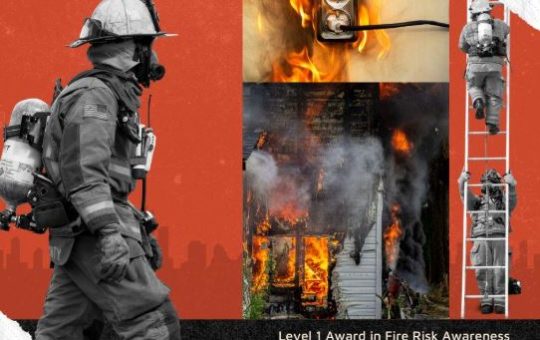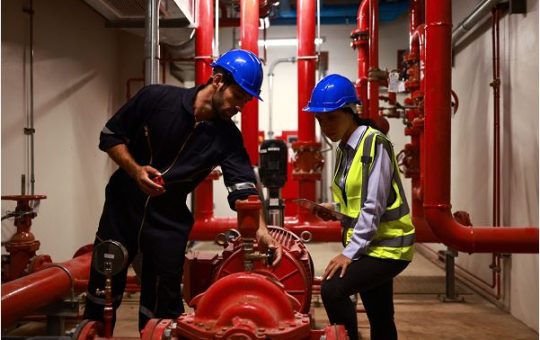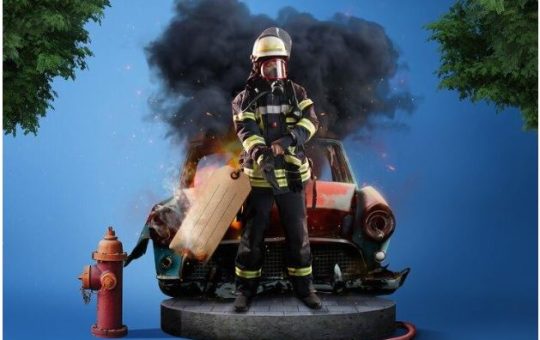
Level 2 Award in Fire Extinguisher Use and Maintenance
- Practical Expertise: Hands-on training in using and maintaining fire extinguishers.
- Regulatory Compliance: Ensures adherence to fire safety and equipment standards.
- Increased Confidence: Equip participants to act promptly during fire emergencies.
- Cost Efficiency: Learn maintenance practices that prolong extinguisher lifespan.
- Career Boost: Gain a recognized qualification that enhances employability in fire safety roles.
- Identify different types of fire extinguishers and their specific applications.
- Understand fire classifications and the appropriate extinguishing methods.
- Operate fire extinguishers effectively in simulated scenarios.
- Perform routine checks and basic maintenance on fire extinguishers.
- Ensure compliance with fire safety equipment standards and regulations.
- Job Roles:
- Fire Warden or Marshal
- Fire Safety Technician
- Maintenance Officer specializing in fire safety equipment
- Further Training:
- Level 3 Award in Fire Safety and Risk Assessment
- Fire Inspector Level 1 and 2 Certifications
- Advanced Fire Safety Management Courses
- Industries:
- Offices and Corporate Environments
- Industrial Facilities and Warehouses
- Public and Government Buildings
- Hospitality and Education Sectors
- Specialized Pathways: Participants can progress to roles involving comprehensive fire safety planning, equipment inspection services, or fire safety consultation.
Study Units
The Level 2 Award in Fire Extinguisher Use and Maintenance course includes:
- Introduction to Fire Safety
- Fire causes and prevention
- Fire classifications and appropriate extinguishing agents
- Types of Fire Extinguishers
- Water, foam, CO2, powder, and wet chemical extinguishers
- Advantages, limitations, and specific uses
- Practical Use of Fire Extinguishers
- Hands-on training in operating fire extinguishers
- Simulated fire scenarios for real-world preparedness
- Routine Inspection and Maintenance
- Performing visual checks for damage, pressure, and accessibility
- Understanding servicing requirements and schedules
- Regulatory Standards and Compliance
- Overview of fire safety regulations and equipment standards
- Record-keeping for inspections and maintenance
Upon successful completion of this qualification, learners will be able to:
Understand Fire Principles: Explain the fire triangle and classify different types of fires.
Identify Fire Extinguisher Types: Recognize various fire extinguishers (Water, Foam, CO₂, Powder, Wet Chemical) and their suitable applications.
Operate Fire Extinguishers Safely: Demonstrate the correct and safe use of fire extinguishers during practical training.
Perform Basic Maintenance: Conduct routine visual inspections to check for pressure, accessibility, and serviceability.
Ensure Equipment Readiness: Maintain fire extinguishers in compliance with workplace safety regulations and manufacturer guidelines.
Promote Fire Safety Awareness: Contribute to workplace fire prevention by ensuring equipment is functional and accessible.
Record and Report Findings: Maintain accurate records of inspection, servicing, and maintenance activities.
The Level 2 Award in Fire Extinguisher Use and Maintenance is designed for individuals who are directly or indirectly responsible for fire safety within their workplace or facility. It is particularly suitable for:
Fire Marshals / Wardens responsible for emergency response and fire preparedness.
Health & Safety Officers overseeing fire prevention and equipment readiness.
Maintenance and Facilities Personnel tasked with inspecting and maintaining fire extinguishers.
Supervisors and Team Leaders managing safety compliance within departments.
Security Staff responsible for ensuring the availability and operability of fire-fighting equipment.
Employees in High-Risk Environments such as factories, warehouses, schools, and healthcare facilities.
Anyone Seeking Practical Fire Safety Skills to enhance workplace safety and professional competence.
Our assessment process is designed to ensure every learner achieves the required level of knowledge, skills, and understanding outlined in each course unit.
Purpose of Assessment
Assessment helps measure how well a learner has met the learning outcomes. It ensures consistency, quality, and fairness across all learners.
What Learners Need to Do
Learners must provide clear evidence that shows they have met all the learning outcomes and assessment criteria for each unit. This evidence can take different forms depending on the course and type of learning.
Types of Acceptable Evidence
Assignments, reports, or projects
Worksheets or written tasks
Portfolios of practical work
Answers to oral or written questions
Test or exam papers
Understanding the Structure
Learning outcomes explain what learners should know, understand, or be able to do.
Assessment criteria set the standard learners must meet to achieve each learning outcome.
Assessment Guidelines
All assessment must be authentic, current, and relevant to the unit.
Evidence must match each assessment criterion clearly.
Plagiarism or copied work is not accepted.
All learners must complete assessments within the given timelines.
Where applicable, assessments may be reviewed or verified by internal or external quality assurers.
Full learning outcomes and assessment criteria for each qualification are available from page 8 of the course handbook.
Top Courses
No results found.
Related Courses
Let's Get in touch
Deleting Course Review
Course Access
This course is password protected. To access it please enter your password below:



